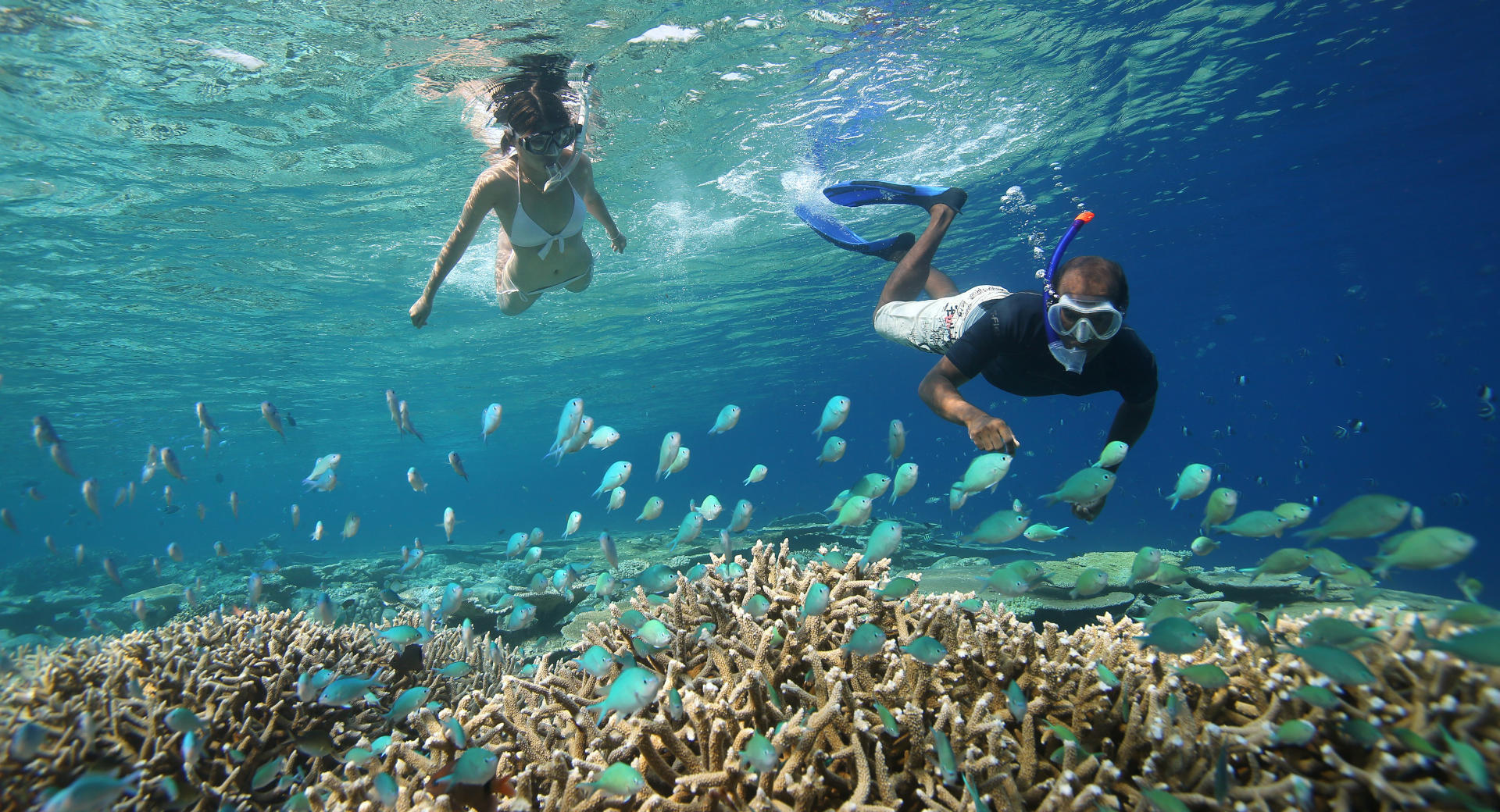
Situated in the middle of the Indian, the Maldives archipelago is a chain of 26 coral atolls made up of 1190 islands. Over millions of years the islands of the Maldives have formed on top of coral reefs, living limestone structures and one of the most biodiverse ecosystems on our planet. The Maldives coral reefs are home to over 1000 species of fish, ranging from the tiny, Purple-Eyed goby (Bryaninops natans) to the immense Whale Shark (Rhincodon typus) growing to 40 feet or more.
One of our favorite activities to do while vacationing in the Maldives is snorkeling, whether that’s from our over-water-villa, along the resort’s house reef, or on a private or scheduled excursion. The calm, clear, turquoise waters are so inviting and teeming with colorful fish. With over 1000 species gracing the reef it can feel overwhelming and often leave you with questions as to what they all are.
We’ve put together a guide for you to easily identify some of the most common fish you’ll see while snorkeling in the Maldives.
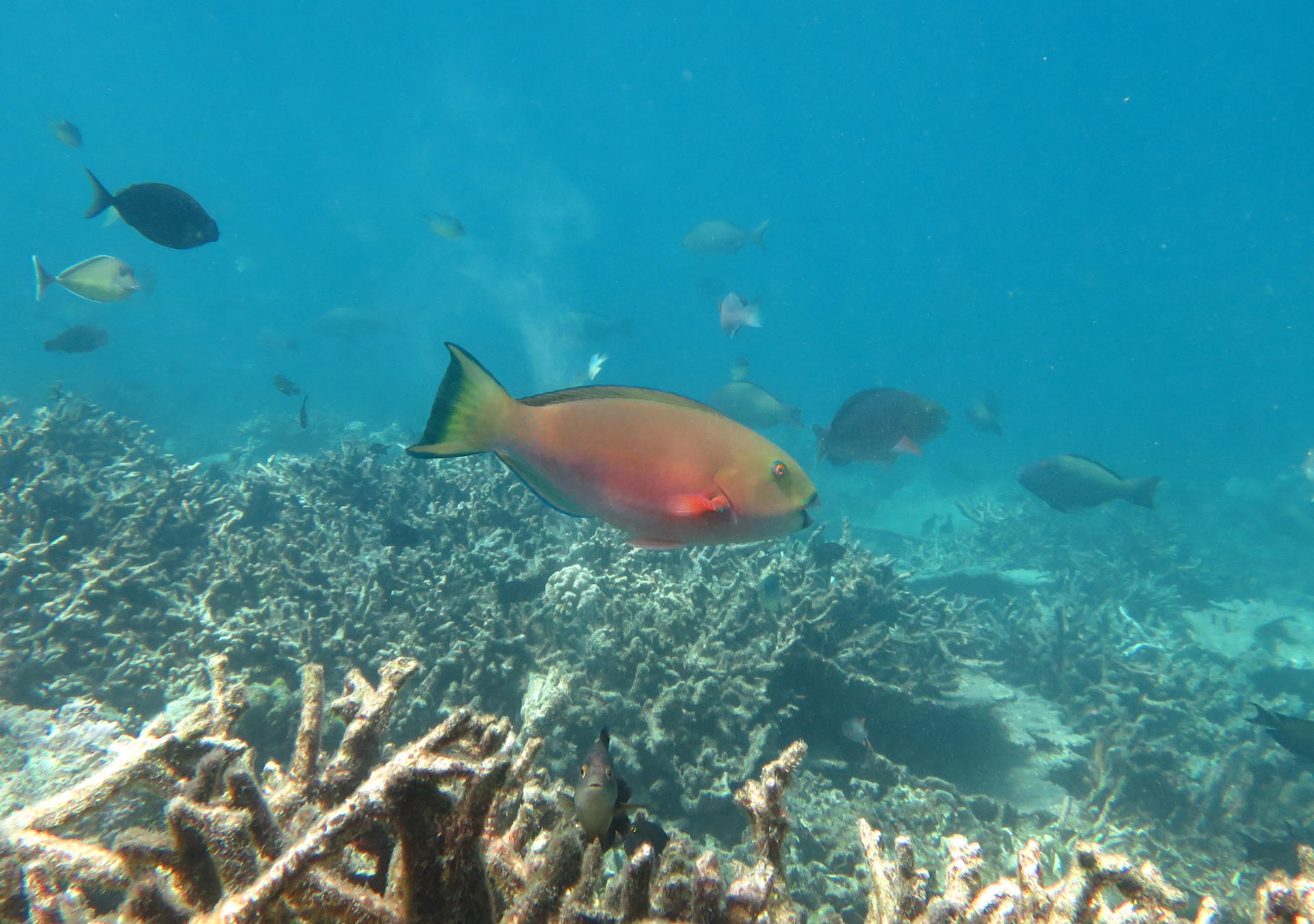
Parrotfish
First up is the Parrotfish. This family of fish play a very important role in the Maldives, a single Steephead Parrotfish (C. strongylocephalus) can produce up to 900 pounds of sand each year and collectively parrotfish will generate up to 85% of the sand found on the beaches of the Maldives. Parrotfish are quite unique looking fish and easily identified by their parrot-like beak, which is used to scrape algae from coral rock, the crunching sounds you can hear while snorkeling. They swim with their pectoral (side) fins and are predominantly green and blue in color with, purple, pink and yellow accents.
Butterflyfish
You will likely spot a pair of Butterflyfish on your snorkel too. These are a family of small to medium sized fish. Butterflyfish are quick moving corallivores and can be seen swimming between coral colonies feasting on coral polyps using their long snouts. Butterflyfish are the masters of disguise, they have a mask or stripe which covers their eyes from predators, to confuse them further, they will often have a false eyespot at the back of their body.
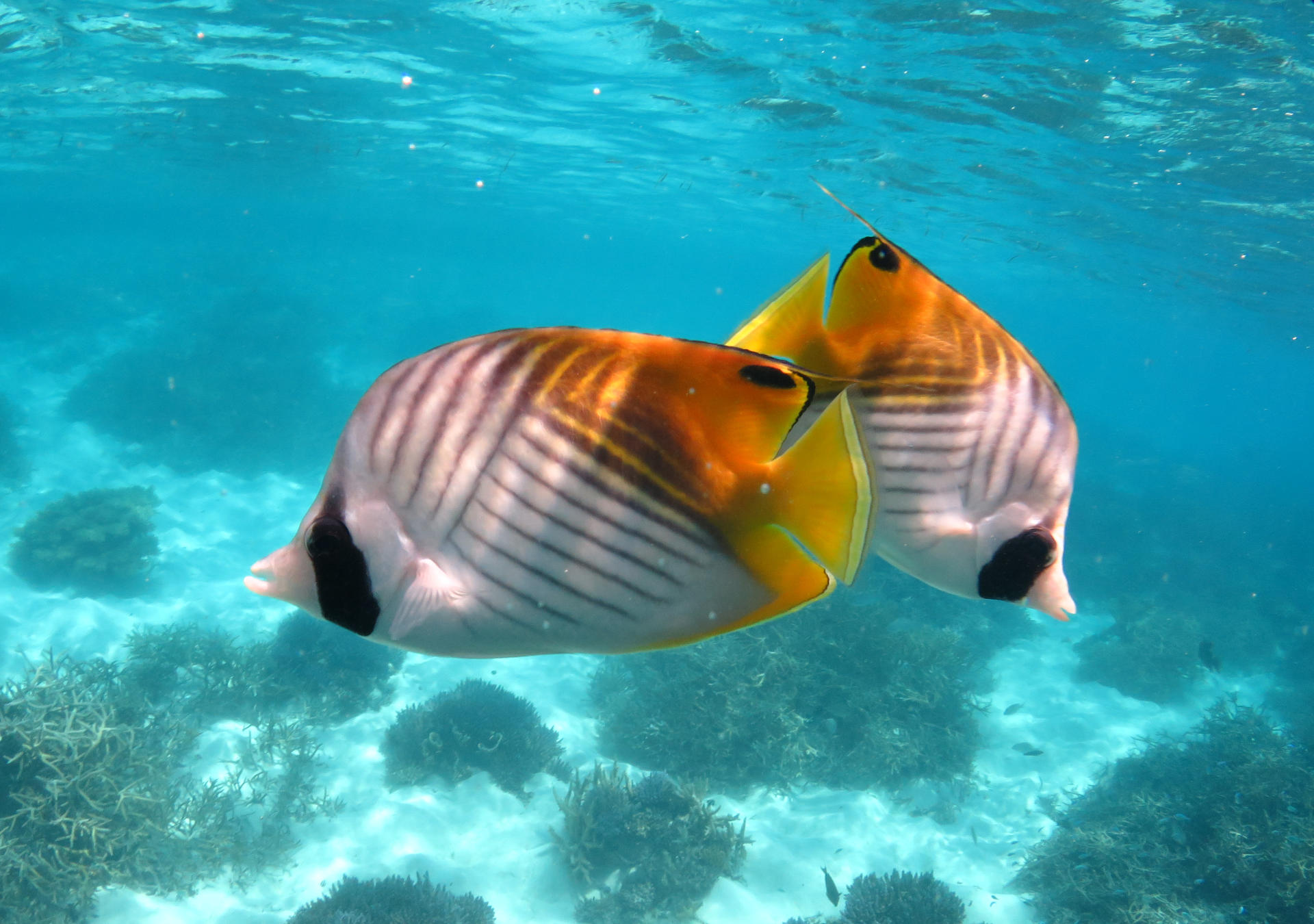
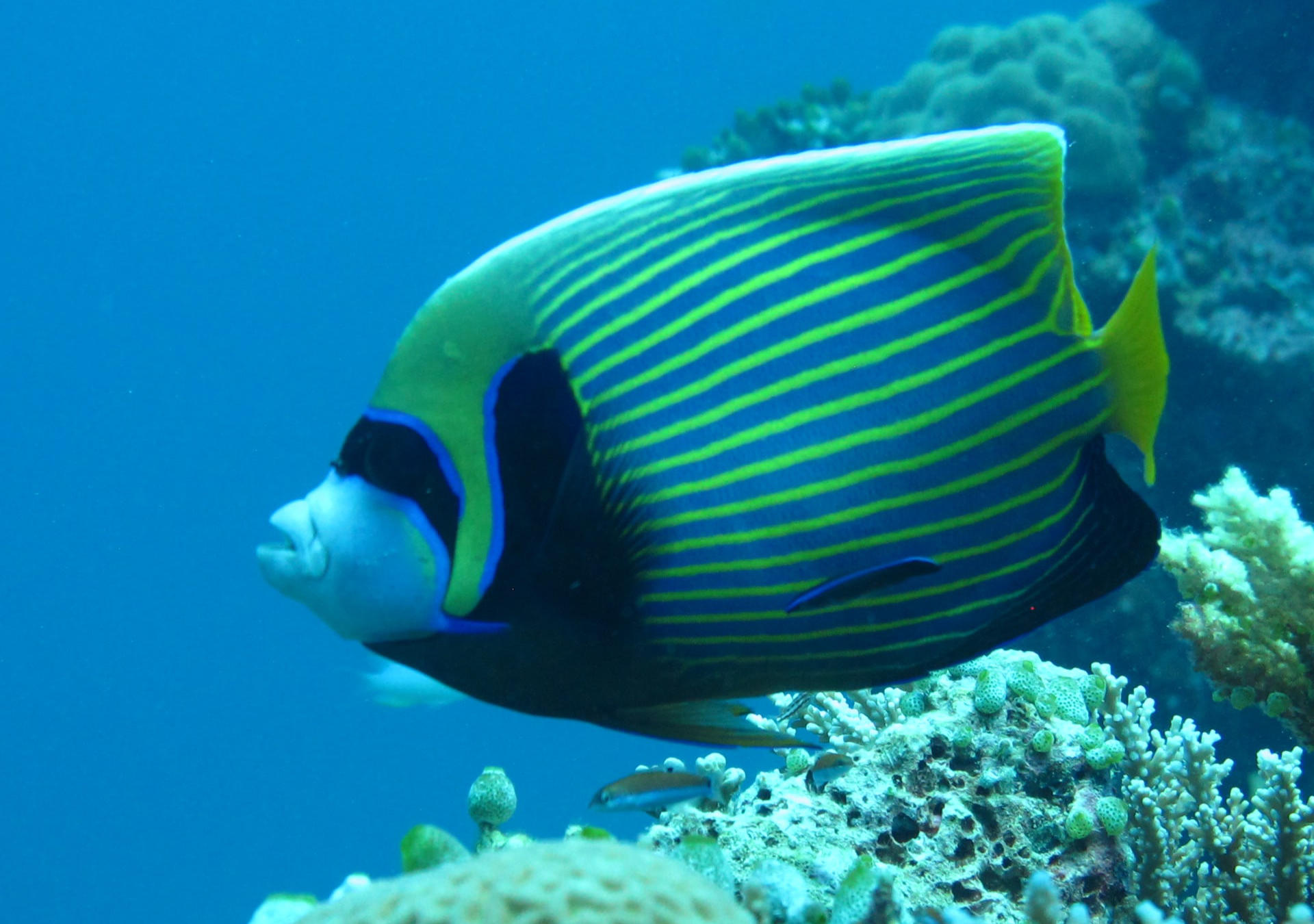
Angelfish
Often confused with their Butterflyfish cousins, the Angelfish are larger in size in size, still swim in pairs but are generally more uniformly disc-shaped, another way to tell them apart is my looking for the spine on the angelfish’s gill cover. They are brightly colored with beautiful patterns and easy to spot on shallow reefs.
Anemonefish
Thanks to a popular 2003 movie, the Maldivian Anemonefish is probably the most famous fish on the reef thanks to their cousin Nemo. If you spot a sea anemone on the reef chances are you’ll find a few anemonefish hiding out amongst the tentacles. This pair share a special relationship that is beneficial to both parties. Keep your eyes peeled for the Clark’s anemonefish too, a larger, darker species with two thick, white bands.
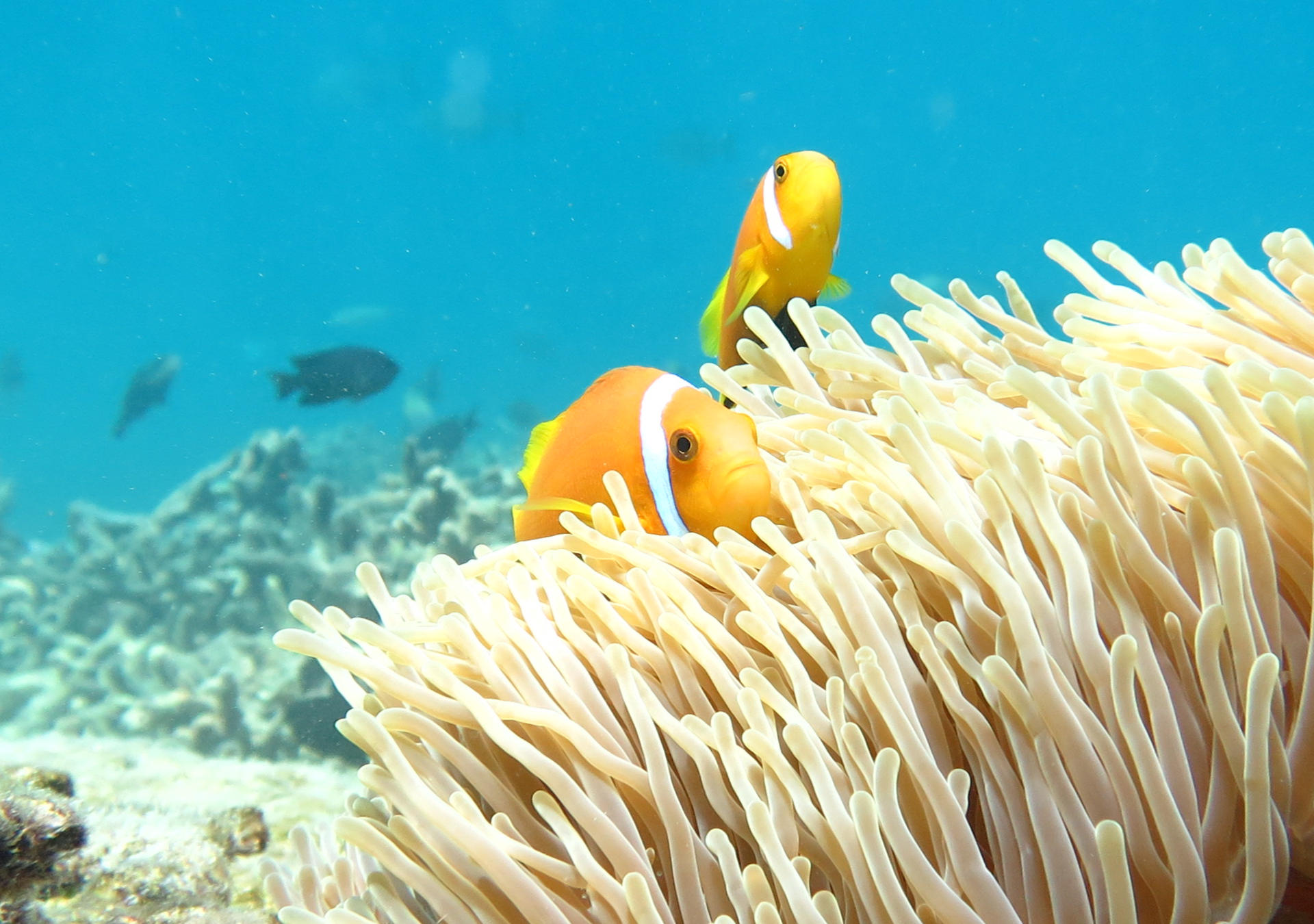
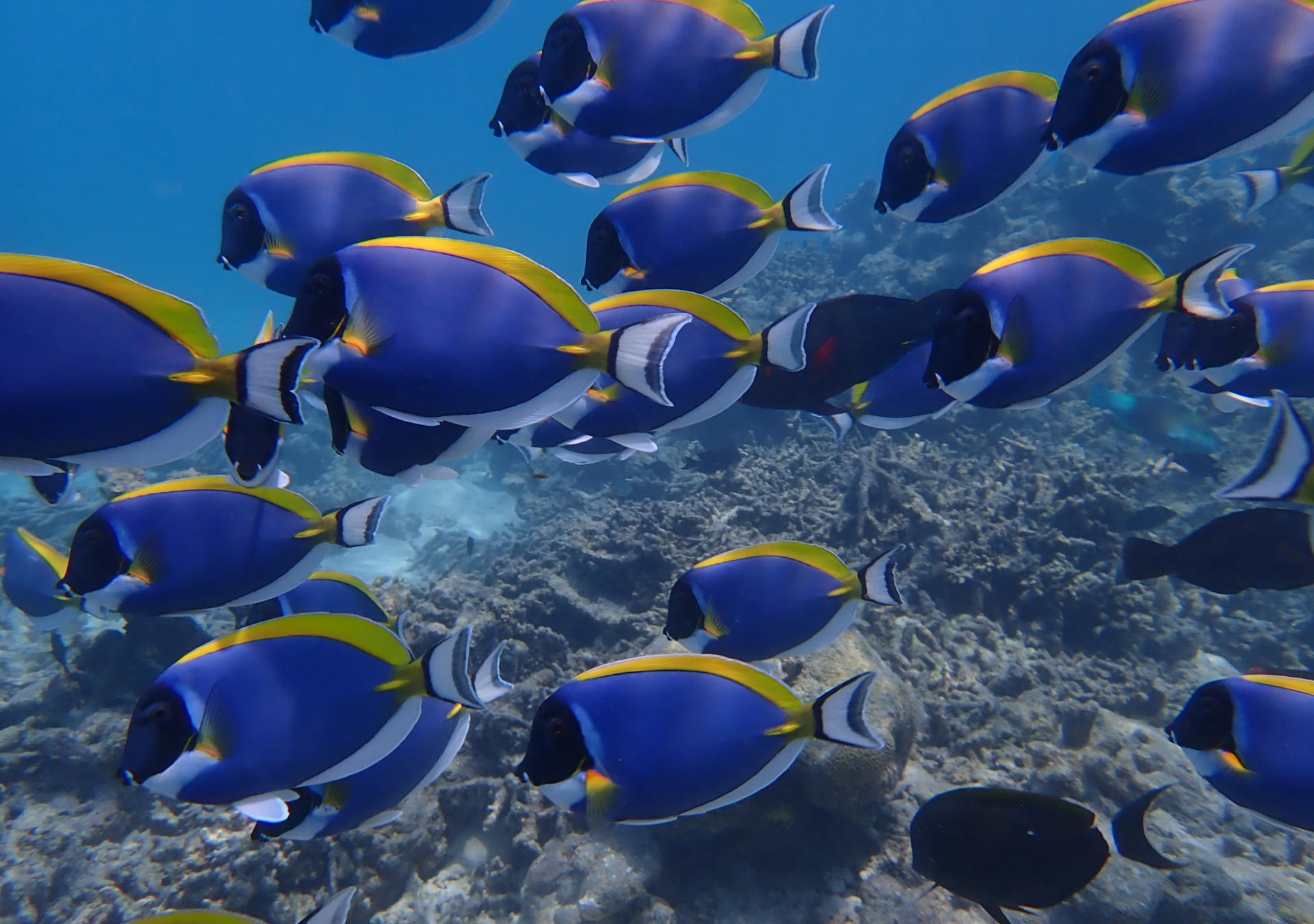
Surgeonfish
These speedy fish bear the name Surgeonfish for the scalpel-like spine they have at the base of their tail. Two striking species you’re sure to see on the reef are the Powder Blue Tang, called for its beautiful powder blue coloring and the Unicornfish, we think it’s pretty obvious how this fish got its name. Surgeonfish are herbivores and many species can be seen in large schools feeding on the algae covering the reef.
Triggerfish
You could be forgiven for thinking you had just seen a piece of artwork zoom past on your underwater escapades, chances are you have just spotted the Picasso Triggerfish. With beautiful, colorful brushstroke-like markings across its body it would be right at home in a gallery.
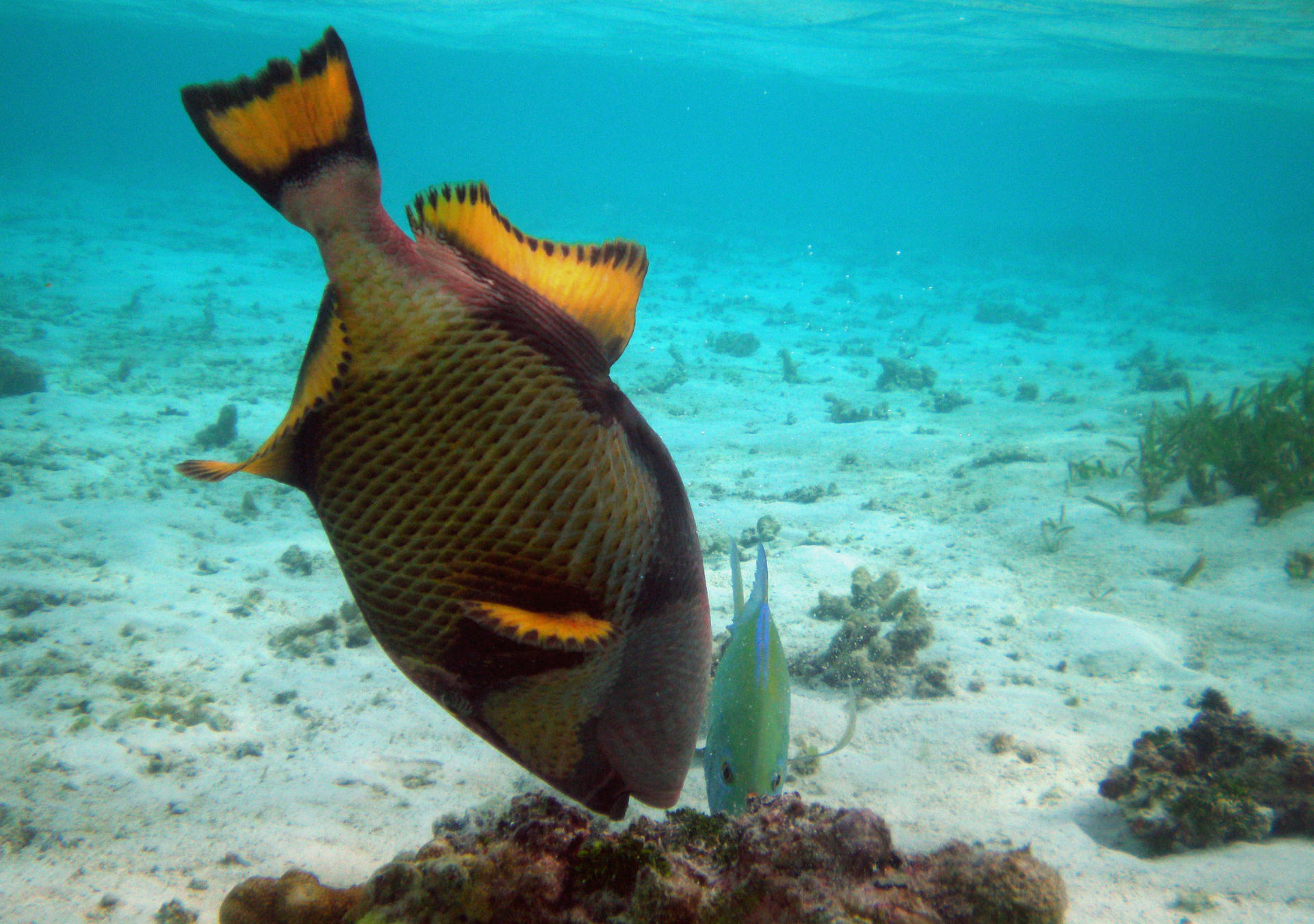
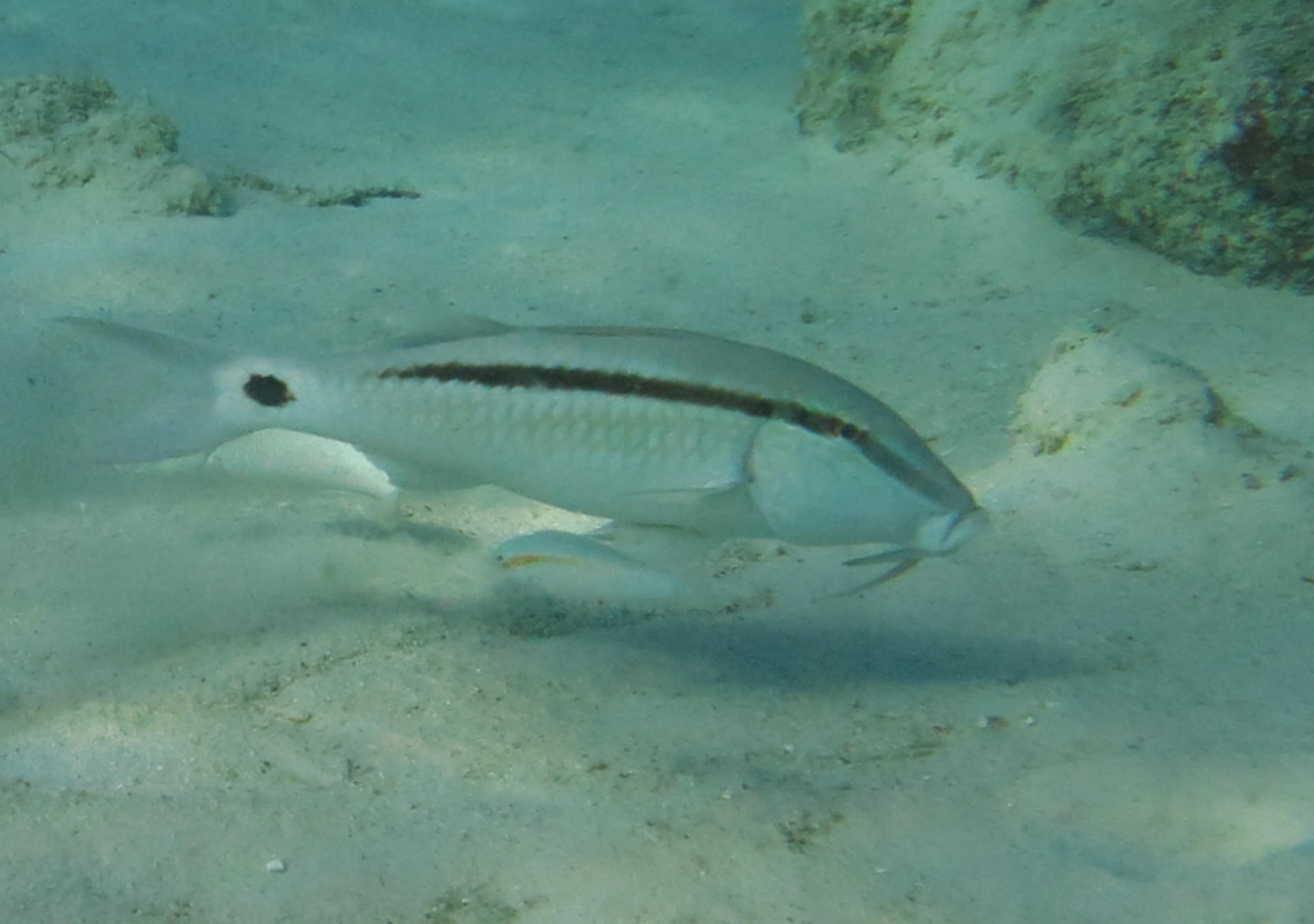
Goatfish
Goatfish can usually be spotted snuffling around in the sand looking for food. They find their prey by using the two barbels under their chin. There are 11 species of Goatfish in the Maldives so be sure to keep your eye out for them.
Pufferfish and Porcupinefish
Pufferfish and Porcupinefish look very similar and will both inflate themselves when stressed or to protect themselves from predators. The biggest difference between the two groups are that Pufferfish have smooth skin, while the Porcupinefish, as their name suggests, are covered in spines, giving them an extra line of defense against predators. Both pufferfish and porcupinefish have fused, beak-like teeth which they use to open mussels, clams and other shellfish.
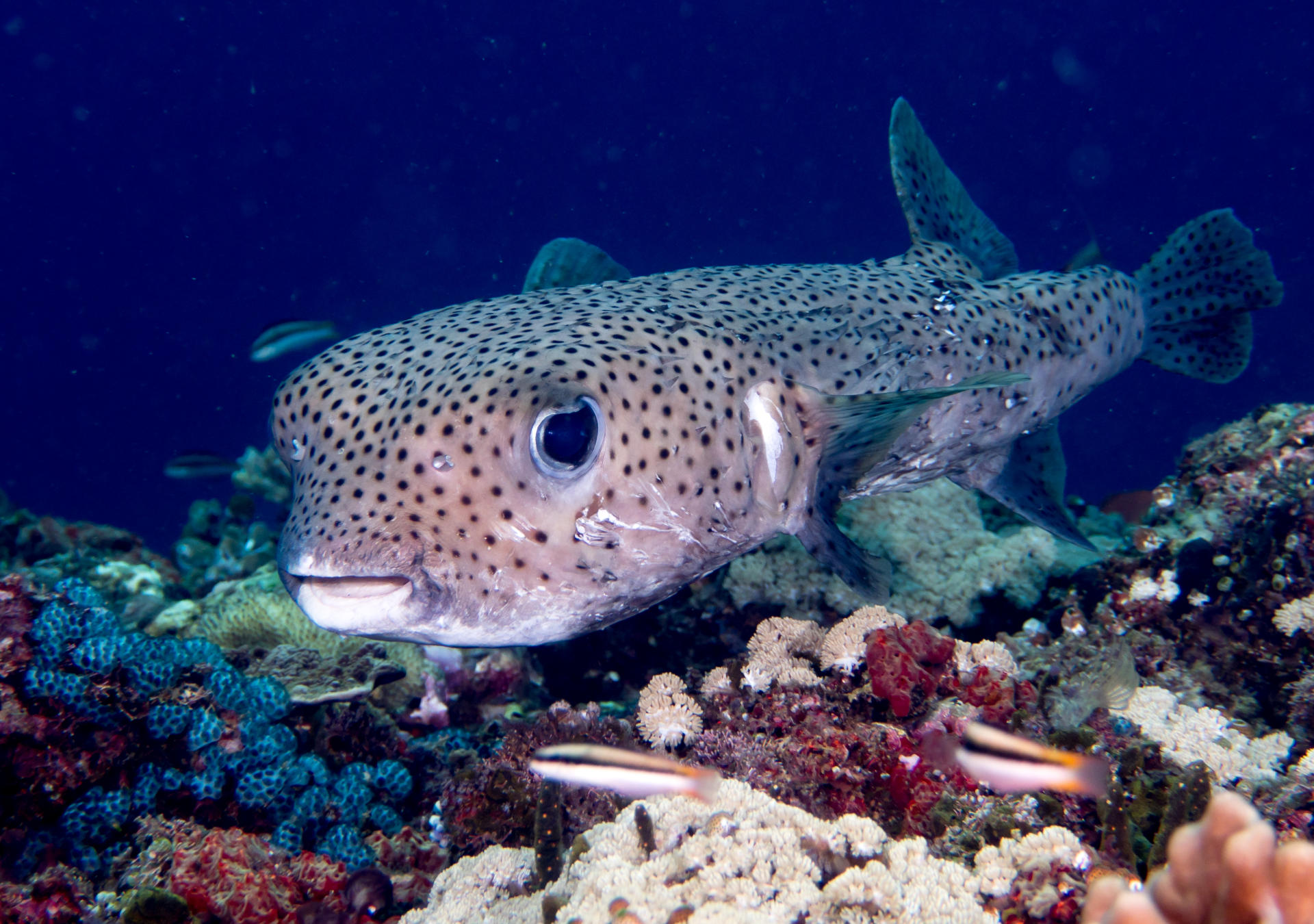
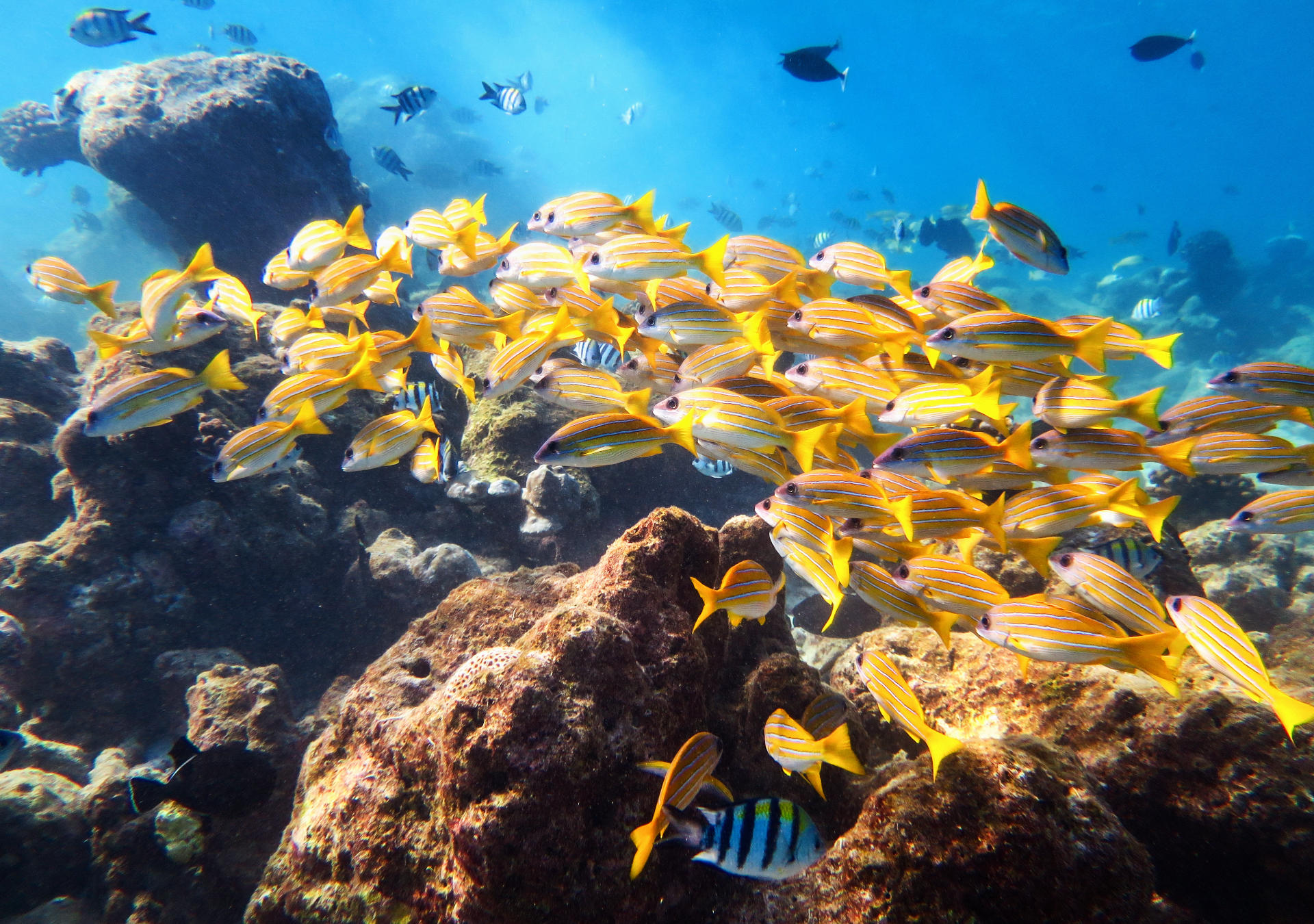
Snapper
The last fish on the list (for now) are the Snappers. There are a number of Snapper species in the Maldives from the bright yellow and blue Bluestripe Snapper (Lutjanus kasmira)to the reddish-pink Humpback Red Snapper (Lutjanus gibbus). The snapper are a medium sized fish typically growing to 20-24 inches in length, with larger species reaching 3 feet. Snapper are found in a variety of habitats so you’ll be sure to see them whether you’re snorkeling on the reef, in the shallow lagoons, or over seagrass meadows.
The reefs in the Maldives are teaming with life and just as beautiful as the resorts, so be sure to spend some time underwater during your vacation.
Our favorite resort house reefs include:
1. Park Hyatt Maldives Hadahaa
2. Raffles Maldives
3. Huvafen Fushi
4. Six Senses Laamu
5. Kudadoo Maldives Private Island
IMPORTANT NOTE: Always take care when swimming and snorkeling in the sea, always consider the weather and water conditions, take note of any currents, stay in recommended areas and never go alone.
